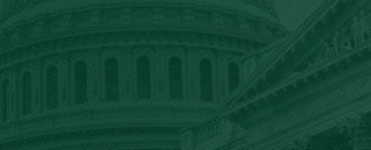
CBO’s stunningly bad budget outlook
The Congressional Budget Office’s updated budget outlook is grimmer than usual — in fact, it’s stunningly bad.
We’ve been warned for years that the federal government faces a grim fiscal future with spiraling debt driven by soaring spending. While lawmakers rightly use tax cuts to prevent the tax burden from getting too high, they have little appetite for reining in spending. Government actions to respond to COVID-19 and the ensuing recession have pushed spending and debt to new records.
Yesterday we learned the looming days of reckoning for America’s spending and debt addictions have arrived — not in some far away time horizon, not in 15 or 20 years, but here now.
First, the record breakers.
- The federal response to the pandemic has been unprecedented, with $3.7 trillion in legislative relief, and a $2.3 trillion increase in the deficit. That dwarfs the Obama stimulus package, the previous record holder with a final price tag of $831 billion.
- Including regular safety net programs and Congress’ consistent lack of restraint, federal spending this year will reach $6.6 trillion — over $51,000 per household. (Last year it was $36,000 per household.) Federal spending has never been that high, ever, in dollar terms. At nearly one-third of the economy this year, today’s spending level was surpassed only during the last three years of World War II. The difference is, once today’s spending recedes to its normally high levels, it will still be in excess of its historical average and will continue to grow ever higher.
- The deficit this fiscal year will be $3.3 trillion, the largest ever recorded. In dollar terms, it is nearly as large as all the tax revenues — $3.5 trillion — collected last fiscal year. At 16 percent of the economy, it’s another postwar record breaker.
- Next year, total publicly held debt will be bigger than the entire U.S. economy, at 104 percent of GDP, or nearly $22 trillion. The previous high was 106 percent set just after World War II, but the debt will surpass that level in just three years and keep rising thereafter. CBO has long projected the federal government would break this record, but further in the future. (Publicly held debt is for securities like Treasuries that are purchased on the open markets. Total federal debt also includes debt one part of government owes to another, like for the Social Security Trust fund — more on that next.)
- Any additional pandemic relief would make all these figures worse.
A note on spending and deficits: Both are projected to decline as a share of GDP after this year. The only good news is that means COVID-19 spending was temporary and, thankfully, interest rates remain low. But despite this, overall spending will quickly resume its upward climb – dragging deficits and debt along with it.
The future is here now
The coronavirus recession has affected not only the pocketbooks of hardworking families, it has also taken a toll on the federal government’s trust funds. We have known for years that major mandatory programs such as Medicare and Social Security were going broke, but assumed the day of reckoning was years off. Now, in a separate report, CBO projected it will come far sooner:
- Highway Trust Fund: 2021
- Medicare Part A Trust fund (for hospital insurance): 2024
- Disability insurance: 2026
- Social Security retirement benefits: 2031
Dedicated revenues, like the payroll tax for Medicare, disability, and Social Security, that pay for trust fund spending will continue to flow so the programs won’t end, but after those dates the funds won’t be able to meet all obligations.
Despite warnings from CBO, the Social Security and Medicare Trustees, and many others, lawmakers have steadfastly refused to take corrective action.
What policymakers must do
These sobering CBO reports should serve as a timely reminder that lawmakers must consider not only short-term policies, but also whether the federal government is on an affordable or sustainable path in the first place.
While some do not worry about spending or the debt today, they should not be complacent with this year’s unprecedented spending and its impact on our poor fiscal condition. America’s debt-to-GDP increase will likely be the largest among the world’s developed economies this year, and the U.S. is the only country where debt will continue to rise after next year, beyond even the levels in this CBO report.
Policymakers should:
Push “pause” on another expensive COVID-19 relief bill. Billions in previously authorized funds remain unspent, and state revenues are seeing a healthy revenue resurgence. While interest rates may be low now, adding to today’s level of debt is not sustainable or affordable.
Fix our massive spending problem and reform the biggest spending programs so they are affordable and work better for those who rely on them most.
Get their arms around the debt. While investors flock to the U.S., if we want to be viewed as the safest harbor in uncertain times, we cannot continue unchecked borrowing. The bipartisan TRUST Act that would create bicameral “rescue committees” for each of the major trust funds would be a good place to start. So too would the bipartisan Congressional Budget Reform Act, which would impose spending reforms and rein in the debt.
These reforms would put our country on a more sustainable path and position our economy to recover stronger.


